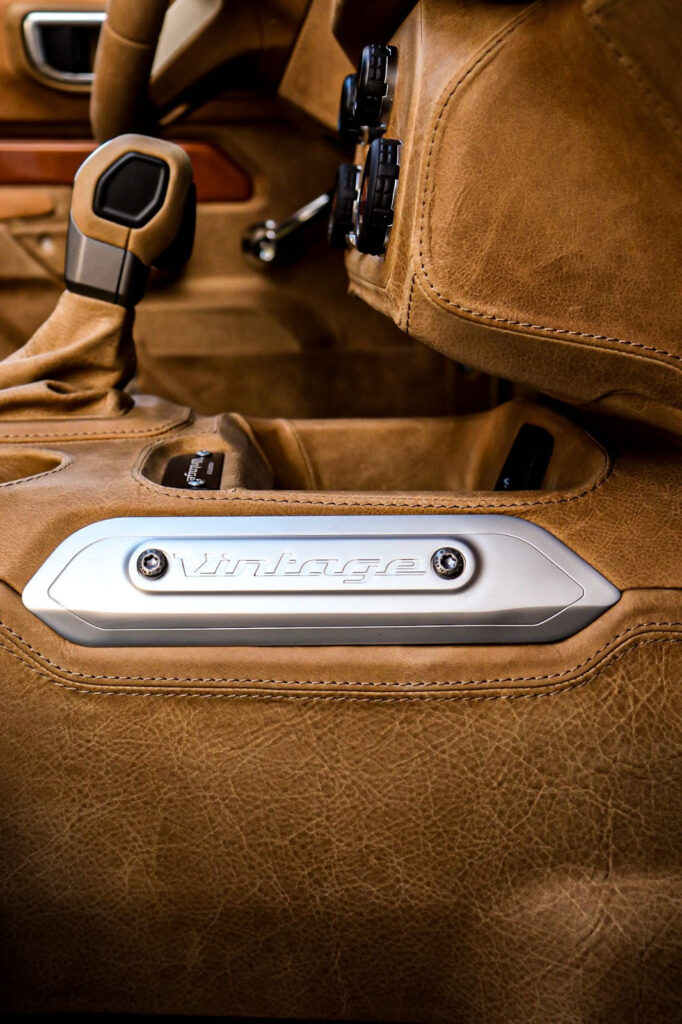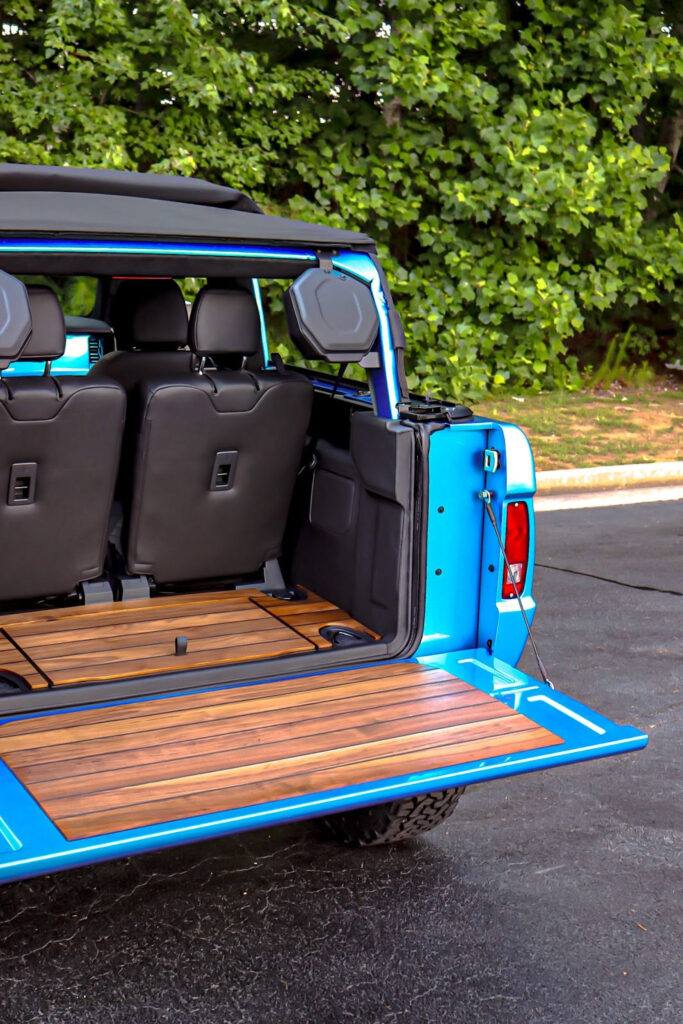If you’re searching for classic car interior restoration or old car interior restoration, you’re after a feeling: leather that smells right, metal toggles that click, and a calm that lets the world stay outside.
The problem is restored and restomod interiors rarely deliver that feeling once you leave the show field and start driving. They’re constrained by past-era safety geometry, dated ergonomics, minimal NVH control, and patchwork electrics—limitations you can’t upholster away.
Modern Classic by Vintage (formerly, Vintage Broncos) cabins are engineered as systems; most traditional classic cabins never were.
What Classic Car Interior Restoration Really Involves
A classic car interior restoration goes far beyond the hides and carpet. It means rebuilding seat structures and anchors, re-trimming every soft surface, refurbishing controls and gauges, reworking HVAC ducting and insulation, and integrating modern electronics into wiring never meant for them. The process often requires rare parts and hundreds of skilled hours, which is why so many projects stretch on for years and consume budgets far beyond expectations. Even then, what you gain is mostly cosmetic. For daily driving, what truly matters—occupant protection, ergonomics, and NVH control remains fundamentally limited.
Why restorations and restomods underperform in real use
1) Safety that can’t be stitched in later
Modern standards like FMVSS 210 require seat-belt anchorages strong enough for pretensioners and load limiters. Older frames and mounting points weren’t designed for those forces. Re-trimming seats doesn’t change the underlying physics, which means crash protection in a restored car simply isn’t comparable
2) Ergonomics from another era
The “cool, upright” posture often hides fatigue that drivers only notice on longer trips. Modern practice defines where controls belong so you can steer, shift, and interact without strain. Most traditional classic layouts simply weren’t designed for today’s expectations of comfort and control.
3) NVH and thermal fatigue
Thin firewalls, sparse sealing, and ad-hoc sound pads leave heat soak, drone, and buzz. True quiet and composure come from NVH engineering (source & path control, sealing strategy, ducting), not from carpet thickness. That’s why trimmed-to-perfection cabins can still feel busy at 70 mph.
4) Electrical gremlins after “simple” upgrades
Stacking modern infotainment, cameras, and amplifiers onto an old harness invites intermittent faults unless you redesign power, grounds, and protection. Hidden complexity becomes on-road unreliability.
5) Time, cost, and uncertainty
High-skill interior work is scarce and labor-heavy. Reputable sources report hundreds to thousands of hours, often with multi-year backlogs, before results approach “daily-driver” quality. Meanwhile, the underlying structure/electrics still cap the ceiling.
The truth is, even a flawless restoration cannot change the physics of an older design. For regular driving, restored or restomod interiors are a compromise you’ll feel especially in safety confidence, fatigue, and quiet.
The Modern Classic alternative: vintage look, modern peace of mind

Modern classic interior doesn’t patch old bones; it starts fresh, and is designed around the outcome you actually want: period-correct feel with modern safety, drivability, and reliability engineered together from the start. Anchorage points, seating geometry, and restraint strategy are planned as part of the whole vehicle, alongside chassis and braking, not retrofitted decades later.
- Ergonomics that reduce fatigue
Wheel reach, pedal spacing, sightlines, and seat height follow modern visibility and reach practice. You keep the upright vibe without the aches.
- Quiet, cool, composed
Multiple insulation layers, sealed doors, and modern HVAC mean you can actually converse or enjoy silence at highway speeds. - Discreet tech that actually works
Infotainment, Bluetooth, high-fidelity audio, and camera systems are integrated on properly designed circuits with clean power and grounds to prevent gremlins. - Materials that age with grace
Premium leathers, robust textiles, and billet details are chosen to last. Proper UV care and pH-balanced products keep them rich for years.
If you want to drive, not just display, the only way to get the look and the lifestyle is a Modern Classic interior. Because upgrading leather and foam won’t move anchorages to modern load paths, won’t fix outdated ergonomics, won’t add systemic NVH tuning, and won’t stop electrical gremlins. A Modern Classic interior bakes all of that in, so you enjoy vintage style with modern safety, comfort, and reliability.
For more on how we achieve vintage character with modern design, see our design insights guide.
Care tips that keep any classic-style interior feeling fresh

Even the best interior benefits from mindful upkeep and maintenance:
Shield and condition: Use UV protection on leather and trim; condition surfaces with maker-approved products at regular intervals.
Clean, don’t soak: Vacuum seams before wiping. Use minimal moisture on textiles and leather to avoid wicking dirt deeper.
Mats and Edges: Debris collects at thresholds and seat rails—clean these zones to prevent abrasion and squeaks.
Keep air moving: Replace cabin filters on schedule; dust accumulates faster in retro-styled vents after spirited off-roading or coastal drives.
Schedule a seasonal cabin check: Fastener torque, latch adjustments, and weather-seal inspections prevent small issues from becoming rattles or leaks.
The takeaway
If your search began with classic car interior restoration, you were chasing a feeling: warmth, craft, and calm. Restoration doesn’t deliver that as much as you’d want. But if you want that feeling every mile, in every season, only a Modern Classic delivers it—period charm with modern comfort, backed by the confidence that safety, drivability, and reliability were engineered into every stitch and fastener.